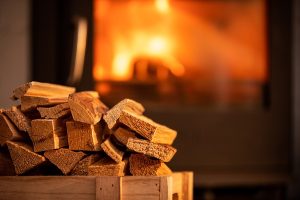Unveiling the Secret Ingredient: The Best Wood for Your Pizza Oven
Picture this: a traditional pizza oven, its flames dancing, and the tantalizing aroma of a perfectly baked pizza wafting through the air. The secret to achieving pizza perfection in your outdoor pizza oven lies not just in the dough and toppings but also in the type of firewood you choose. In this guide, we’ll uncover the best woods for a pizza oven, exploring their flavors, burning characteristics, and the magic they bring to your pizza-making experience.

The Art of Wood-Fired Pizza: A Symphony of Flavors
Cooking pizza in a wood-fired oven is more than just a cooking method; it’s an art form. The right wood can impart unique flavors to your pizza, enhancing its taste and giving it that authentic, rustic charm. Here are some of the best woods to elevate your wood-fired pizza game:
- Hardwood Classics: Oak and Hickory
- Oak and hickory are hardwoods known for their slow and steady burn. This quality makes them excellent choices for pizza ovens, as they provide a consistent heat source. Moreover, these woods add a robust, smoky flavor to your pizza, creating a delightful fusion of char and aroma.
- Fruitwood Elegance: Apple and Cherry
- Fruitwoods, such as apple and cherry, are prized for their sweet and fruity aroma. When used in a pizza oven, these woods infuse a subtle, nuanced flavor into the crust and toppings. Applewood, in particular, imparts a slightly sweet and mild smokiness, enhancing the overall taste of your pizza.
- Mediterranean Charm: Olive and Citrus Woods
- For those seeking a touch of the Mediterranean in their pizza, olive and citrus woods are excellent choices. Olive wood, with its distinct aroma, imparts a mild and slightly sweet flavor to the pizza. Citrus woods, like orange or lemon, add a refreshing and aromatic twist, making your pizza experience truly unique.
Choosing the Right Wood: Factors to Consider
Selecting the best wood for your pizza oven involves considering various factors, each contributing to the overall cooking experience. Here are some key considerations:
- Flavor Profile: Crafting a Culinary Masterpiece
- Consider the flavor profile you want for your pizza. If you prefer a smokier, robust taste, hardwoods like oak and hickory are ideal. For a sweeter and more nuanced flavor, fruitwoods like apple and cherry take center stage.
- Burn Characteristics: The Importance of Consistency
- The burn characteristics of wood play a crucial role in maintaining a stable and even cooking temperature. Hardwoods tend to burn slower and more consistently than softer woods, ensuring a steady heat source throughout the pizza-making process.
- Availability: Local Wood and Sustainability
- Opting for locally sourced wood not only supports local businesses but also reduces the environmental impact associated with transportation. Additionally, consider the sustainability of the wood source to make eco-friendly choices for your pizza oven.
Wood Preparation: From Logs to Ember-Ready
Properly preparing your wood is as important as selecting the right type. Follow these steps to ensure your chosen wood is ready to transform into a bed of glowing embers:
- Seasoning: Drying for Optimal Performance
- Seasoning, or drying, the wood is crucial for optimal combustion. Freshly cut or green wood contains a high moisture content, which can lead to excessive smoke and inconsistent burning. Allow your wood to season for at least six months to achieve the ideal moisture level.
- Size Matters: Finding the Right Dimensions
- Cut your wood into appropriately sized logs or chunks. The size of the wood influences the combustion rate and the intensity of the fire. Aim for a mix of larger logs for a steady base and smaller pieces for quick ignition and heat intensity.
- Storage: Sheltering from the Elements
- Store your seasoned wood in a dry, well-ventilated area. Exposure to rain or excessive humidity can undo the seasoning process. A covered woodshed or a purpose-built storage area will protect your wood from the elements.
Tips for a Perfect Wood-Fired Pizza
Now that you’ve selected the best wood and prepared it to perfection, here are some additional tips to ensure your wood-fired pizza reaches its full potential:
- Preheat the Oven: Achieving the Ideal Temperature
- Allow sufficient time for your pizza oven to preheat. The ideal temperature for a wood-fired pizza ranges between 700°F and 800°F (370°C to 430°C). This high heat cooks the pizza quickly, creating a crispy crust while maintaining the juiciness of the toppings.
- Wood Placement: Building the Foundation
- Arrange the wood in your pizza oven strategically. Start with a base of larger logs or hardwood chunks to establish a stable foundation. Add smaller pieces or fruitwood chunks on top for a burst of flavor.
- Embrace the Flame-Kissed Crust: Rotating for Even Cooking
- Rotate your pizza during the cooking process to ensure an evenly cooked crust. The radiant heat from the flames imparts a characteristic char, enhancing the flavor and texture of the pizza.
Conclusion: Elevate Your Pizza Experience with the Right Wood
In the world of wood-fired pizza, the choice of wood is a culinary decision that can elevate your pizza from ordinary to extraordinary. Whether you opt for the robust smokiness of oak, the sweet aroma of apple, or the Mediterranean charm of olive wood, each type brings its unique magic to the pizza oven.
As you embark on your wood-fired pizza journey, experiment with different wood types, combinations, and cooking techniques to discover your signature pizza masterpiece. Remember, the best wood for your pizza oven is not just fuel; it’s the secret ingredient that turns a simple meal into a memorable culinary experience. So, gather your wood, ignite the flames, and savor the delicious results of a perfectly wood-fired pizza. For further reading check our guide to firewood